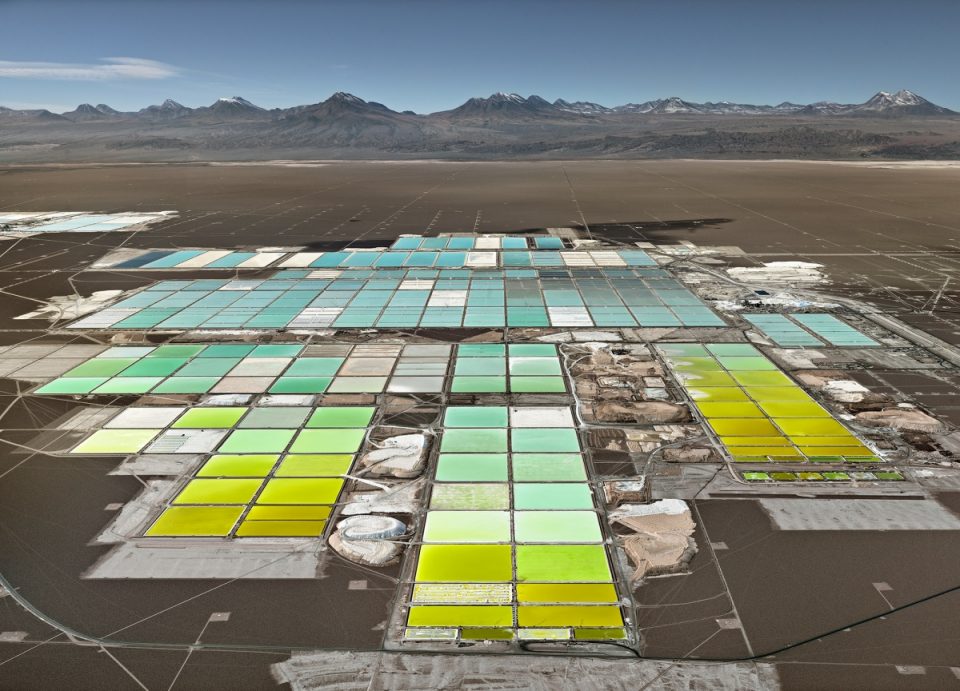Until recently, in Washington and in Brussels, North Macedonia was considered a Euro-Atlantic success story. The country of two million people – the only republic of the former Yugoslavia that saw no violence during the 1990s – had managed to overthrow the conservative nationalist government of Prime Minister Nikola Gruevski and his VMRO-DPMNE (the Internal Macedonian Revolutionary Organization–Democratic Party for National Unity) after a decade in power. In 2017, Gruevski’s place was taken by Zoran Zaev, the mayor of the agricultural city of Strumica and leader of the Social Democratic Union of Macedonia, or the SDSM, the successor of the state-socialist League of Communists of Macedonia. Zaev’s new Foreign Minister, Nikola Dimitrov, was on exceptionally friendly terms with the US Embassy; he had served as National Coordinator for NATO Integration under Gruevski, and embassy cables revealed that he had worked for years as a CIA protected source.
Two successive protest movements – Protestiram in 2015 and the Colorful Revolution in 2016 – had elevated a number of telegenic youth activists from the streets to positions in the SDSM government, promising hope and change. An anti-corruption campaign was launched to deal with the cases generated by Gruevski’s graft-riddled reign. After the SDSM rechristened the country ‘North Macedonia’ in 2018 (ending a long-running feud with Greece, which claims the name ‘Macedonia’ as its own), Athens dropped its objection to the country’s NATO membership, and in March 2020 the Atlantic alliance welcomed its newest member. EU accession was next on the agenda.
But relatively quickly, the hopeful glow that had haloed Zaev and the SDSM began to fade. Last month’s local elections revealed the depth of public disenchantment. Zaev’s party went into the ballot holding 57 municipalities while the VMRO-DPMNE had just 5. After the vote, the SDSM hung onto 16; VMRO secured 42. The remaining 15 municipalities went to Albanian parties. The poll has been widely interpreted as a verdict on the SDSM’s tenure, and the latest surveys conducted by the Institute for Political Research Skopje (IPIS) reveal that the party is fast losing support at national level: 22.5% of respondents said they would vote for VMRO-DPMNE if parliamentary elections were held next week, while 17.5% said they would vote for the SDSM.
The disastrous result marked the onset of a new crisis in North Macedonia. Zaev, who pledged to resign if his party lost the capital of Skopje in the second round, reneged on his promise. This triggered a bizarre cascade of events in which the opposition accused the government of kidnapping an MP from the Albanian party, Besa, in order to prevent him from participating in a planned no-confidence vote against Zaev. One week later, Zaev appeared to have changed his mind again, declaring that he would resign and appoint a new leader to head the SDSM. He has encouraged pro-EU MPs to stick with his party; yet since Bulgaria vetoed the country’s accession in 2020 – citing disputes over language, history and minority rights – there has been no viable plan to initiate negotiations with the bloc.
It’s worth examining how the SDSM arrived at this low point. Few parties in the Balkans have received such effusive praise from Western diplomats, thinktanks and media outlets; and few have disappointed so thoroughly. It must first be stressed that the party inherited a country in disarray, reeling from a decade of dictatorship, illiquidity, a collective identity crisis and corruption on a vast, almost awe-inspiring scale. When Gruevski first came to power in 2006, the US and EU lauded his commitment to neoliberal adjustment and NATO membership. But the warm relationship soured at the 2008 NATO summit in Bucharest, when Greece vetoed the country’s entry to the Atlantic compact: a moment of humiliation that reportedly prompted Gruevski to turn away from the West.
That same year, the global financial crisis provided a new path for the PM. Gruevski’s market-friendly reforms, along with a sophisticated government PR campaign, managed to seduce international investors. ‘While the architecture of global liquidity crumbled,’ writes Fabio Mattioli in Dark Finance (2020), ‘the Macedonian government found itself able to access investments from actors interested in diversifying their portfolios or committed to preventing a Balkan-wide contagion of the debt crisis that had begun to wreak havoc in Greece.’
Much of the new public debt was channelled into mass construction projects, most ostentatiously ‘Skopje 2014’, which cost at least 683 million euros and transformed the capital into a giant open-air museum of bronze nationalist statues and incongruous neo-baroque and neo-classical buildings. Skopje now looks like a kitsch hybrid of a Central Asian capital, a Balkan Las Vegas and Macedonian-nationalist Disneyland. The pièce de résistance of Skopje 2014 is the 35-meter statue of Alexander the Great atop a horse in the city’s main square. Sometimes, during the Gruevski years, surrounding speakers blasted Wagner’s ‘Ride of the Valkyries’ as dancing fountains pulsed in time.
Gruevski’s remaking of the city allowed him to achieve a crucial political objective. The SDSM, having overseen the country’s privatization process during the 1990s, when socially-owned enterprises were sold to private investors at an average of 6.5% of their estimated value, had long been favoured by the country’s oligarchs. But in Skopje 2014, Gruevski found a means to purchase the support of such interests, offering lucrative contracts for domestic businesses which, by turning Skopje into a ‘world-class city’, began to attract finance from abroad. While Skopje 2014 was detested by the middle classes, it proved popular among lower-income workers. The speculative building spree expanded access to housing through a variety of credit schemes and kept employment levels high in the construction sector.
But Gruevski’s cross-class coalition was not to last. Details of the criminal machinations behind the urban renewal plan began to emerge after tape recordings of backroom deals were passed to Zaev (allegedly by disgruntled secret policemen, although Gruevski claims that foreign intelligence agencies were involved). Zaev, who subsequently began holding press conferences and sharing the recordings with the public, quickly became the face of the opposition and mass protests filled the streets, drawing crowds of up to 30,000 in Skopje during the late spring of 2016.
Cue significant interest from Western governments, particularly the US, which saw an opening amid the public dissatisfaction with Gruevski. The PM and other hardline nationalists had long opposed any change to the country’s name to appease Greece – an intransigence that rendered NATO membership out of reach. As tensions with Russia flared over Ukraine, eastward expansion became an urgent priority for Washington – and Gruevski, an obstacle. There was also long-held optimism that resolution of the name dispute would have knock-on benefits for the entire region, where issues of contested history or territory still linger in Cyprus, Montenegro, Bosnia and Herzegovina, Kosovo.
At the height of the demonstrations, the United States’ Office of Transition Initiatives – a branch of USAID – opened an outfit in North Macedonia. The OTI was established in 1994 to ‘support U.S. foreign policy objectives by helping local partners advance peace and democracy in priority countries in crisis’ (for which read: facilitate regime change). VMRO supporters soon discovered that the OTI programme was supporting the same network of NGOs and media outlets as George Soros’s Open Society Foundation, and that there was a significant overlap between the employees of these US-funded NGOs and the activists leading anti-Gruevski protests on the streets of Skopje. A ‘Stop Soros’ campaign was launched, drawing support from some Republican Senators in the US. In March 2017, six of them wrote to Secretary of State Rex Tillerson:
Unfortunately, we have heard credible reports that, over the past two years, the U.S. Mission to Macedonia has actively intervened in the party politics of Macedonia, as well as in the shaping of its media environment and civil society, in an improperly partisan manner, one that, directly and indirectly, has influenced the outcome of elections in Macedonia.
The US Embassy in Skopje denied such allegations but made little effort to conceal Washington’s priorities. In an email to me at the time, embassy spokesperson Laura Brown wrote that ‘Macedonia’s four major political parties requested the EU and the US government help Macedonia move past its political crisis’. ‘Our policy’, she continued, ‘is to support Macedonia’s integration into Euro-Atlantic institutions as a resilient, prosperous, and inclusive democracy, developing economically.’
This was not the only instance of foreign political support flowing into the country. In 2016, with Gruevski still clinging onto power, the Special Prosecutor’s Office (SJO) opened with much fanfare. The SJO would, in the words of then Ambassador Wouter Plomp of the Netherlands, ‘establish accountability for past wrongdoings revealed by the wiretaps’. The Dutch Ministry of Foreign Affairs funded the SJO to the tune of 649,990 euros. Its three chief prosecutors, Katica Janeva, Lence Ristoska, and Fatime Fetai, received the endorsement of top European officials, as well as fawning coverage from Western media, with the BBC calling them ‘the real crime-fighting Charlie’s Angels’.
Despite the ongoing corruption investigations, the VMRO managed to eke out a narrow victory in the December 2016 snap parliamentary elections. Gruevski’s party won 51 seats while the SDSM took 49. In the aftermath, however, the VMRO struggled to form a coalition, and the SDSM – with rumoured behind-the-scenes support from Western embassies – successfully courted the country’s largest Albanian party and long-time kingmaker, the DUI. VMRO supporters were determined to obstruct the frail new coalition. In an April 2017 parliamentary session to initiate the formation of the new government, a small nationalist mob stormed the Sobranie. Zaev and three other MPs received mild injuries during the ensuing confrontation. Images of a bloodied Zaev went viral, but the drama ended there. There was no coup or renewed Balkan conflict. The Gruevski regime, which once seemed ingrained in every fibre of the country – every phone call, every illegal transaction – finally crumbled like cheap plaster.
It was a heady moment for the SDSM, yet the elation and relief were short lived. In 2018, the SJO launched a major investigation under the codename ‘Empire’. One of its suspects was Jordan Kamchev – recently named North Macedonia’s richest man – whose reported net worth of 228 million euros was allegedly earned through fraud and money laundering. It turned out that Kamchev had friends in high places. The businessman had reportedly turned to Boki 13, a flamboyantly dressed pop star with cheeks and lips cemented in filler, in an effort to secure lenient treatment from the SPO. Boki 13 had ties to the upper-echelons of the SDSM; in one leaked taped recording he claimed to have direct links to Zaev himself. Kamchev allegedly paid Boki 13 at least 1.5 million euros in cash in an effort to avoid a harsh prison sentence. Janeva, one of the ‘Charlies Angels’ prosecutors, was charged with taking a 50,000 euro bribe from Kamchev. The tabloid-ready scandal dealt a spectacular blow to the credibility of both the SJO and the new government.
Hopes for the SDSM atrophied further in September 2018, when the country organized a referendum on whether to change its name as required for Euro-Atlantic integration. Under the slogan ‘Never North’, the majority of voters boycotted the vote, whose participation rate stood at just 36%. Although this fell far short of the 50% required to legitimize the results, the SDSM nonetheless declared the referendum a victory and pushed through the name-change – prompting widespread disenchantment with the democratic process and crystallizing the image of the SDSM as a conduit for Western interests.
During its 2017 election campaign, SDSM supporters claimed that Zaev would ameliorate poverty and increase living standards. Zaev played up his humble origins in the southeastern provinces and his early life as a manual labourer. A new Personal Income Tax Law, ratified in January 2019, was supposed to introduce a progressive tax code affecting only the richest 1% of citizens. Yet less than a year later the Ministry of Finance released a twenty-page policy paper explaining its decision to roll back this modest reform. The Ministry cited widespread tax evasion, yet the real reason for the volte-face was clear enough. As a report by the European Commission concluded, the decision was taken to ‘buffer the angry sentiments of the business community’. The Minister of Finance Dragan Tevdovski, widely seen as leading the pro-welfare wing of the SDSM, was removed from office despite enjoying one of the highest approval ratings of anyone in government. Zaev, whose attempt to assume the role himself was deemed unconstitutional, instead appointed Nina Angelovska, a young e-commerce entrepreneur and opponent of Tevdovski’s modest redistributionist policies. Angelovska was in turn replaced by Fatmir Besimi, who had served as Minister of Economy under Gruevski – undermining any pretence that the SDSM had broken with the previous administration.
A series of recent disasters have further damaged the government’s credentials. Last September, a fire at a new hospital built to treat Covid patients in Tetovo killed 14 people. In the aftermath, it emerged that the company contracted to build the hospital was owned by Koco Angjusev, a notoriously corrupt businessman and Zaev’s former Deputy Prime Minister. An investigation concluded that the fire had occurred due to a faulty defibrillator. Predictably, no one was held accountable. Health Minister Venko Filipče tendered his resignation and had it summarily rejected by Zaev.
Then, on 9 November, while the public was fixated on the post-election fallout, the government quietly declared a ‘30-day state of crisis’ in the energy sector. To meet its daily electricity needs, the country has been forced to draw on European energy supplies and racked up a sizable debt. Dramatic measures have since been introduced to curb consumption: Christmas lights have been cancelled in most towns across the country, and a new decree outlines criteria for reducing the lighting of streets, squares and other buildings to a ‘minimum safety level’. In recent months the REK Bitola coal plant, which generates 75% of the country’s electricity and dangerous levels of sulphur dioxide, has been the site of numerous fires. It is difficult to view the SDSM as a modernizing force when they have plunged the country into darkness.
With North Macedonia still mired in multiple crises, three potential outcomes have been forecast for the months ahead. In the first, the current SDSM-led majority stays but with a new leader entirely subordinate to Zaev. In the second, favoured by the VMRO, snap elections are called, with the requisite 120 days allotted to organize elections in the middle of unprecedented health and energy crises. In the third, the current majority simply collapses and opposition parties attempt to form a new coalition. The precise parameters of North Macedonia’s future are uncertain. What is clear is that the country’s once-bright Euro-Atlantic future now looks distant and dim.
Read on: Peter Gowan ‘The NATO Powers and the Balkan Tragedy’, NLR I/234.










